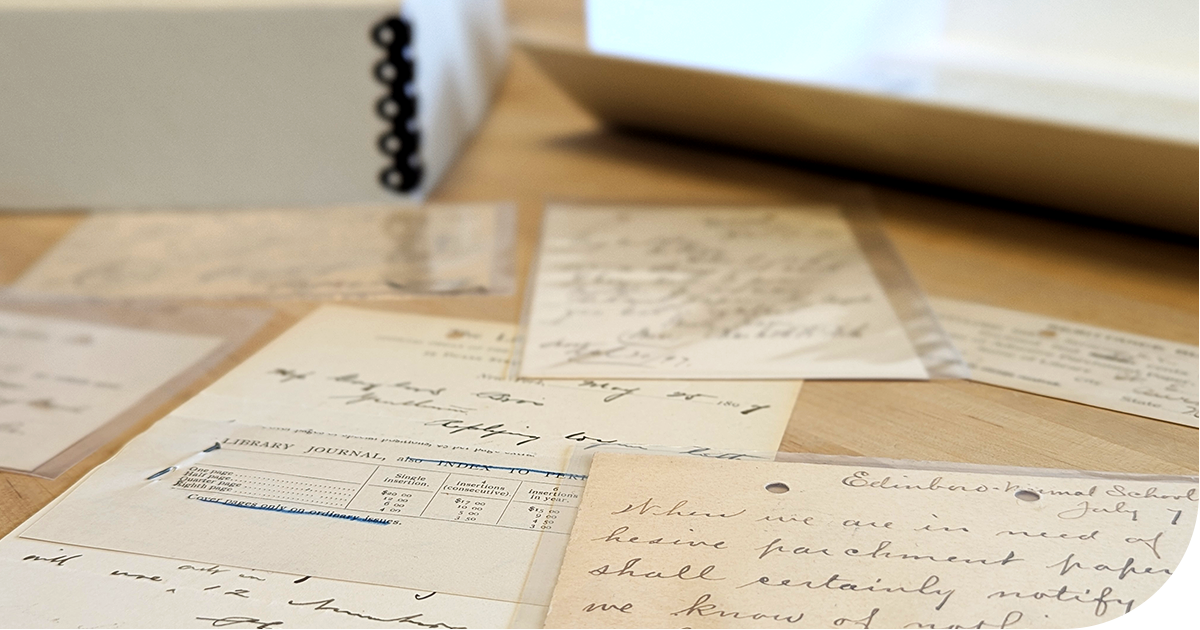Family letters and correspondence are more than paper—they're pieces of history. Whether passed down through generations or saved from a special time, preserving them carefully ensures your stories remain safe for the the future.
Handling & Assessment Basics
- Prepare your hands & workspace: Wash and dry your hands before handling documents, and be sure to work with a clean, clutter-free surface.
Wearing gloves while handling documents is unnecessary and, in some cases, can be more harmful than helpful, as they reduce tactile sensitivity, which can lead to torn pages. -
Look over your collection: Note how many letters and envelopes you have, as well as their sizes. This will help you select the right storage materials.
-
Protect through digitization: Scan letters and envelopes to create a backup and share copies with family. Using the scans for reference and display to help prevent deterioration of the originals. Need help with scanning? Check out our resource to get started. >
-
Unfold flat when possible: Store letters flat, not folded. If unfolding causes risk of tearing, don't force it—seek conservator advice instead.
When to Consult a Conservator
- If a letter is too brittle or fragile to unfold.
- If you believe certain letters may have cultural or historical value.
-
Use AIC's Find a Conservator Tool to find a conservator near you.
Preservation Options
Although there are countless storage possibilities for letters, for simplicity, we've described two options below. Regardless of the option you select, it's essential to consider these factors:
-
Create a sorting strategy. Storing letters in chronological order is an obvious option. Consider further strategies, such as sorting by sender, matching correspondence between individuals, or other similar options.
-
Maintain context. If your letters are in their envelopes, you will want to make sure they stay together. The same is true for any extraneous materials that may be with the letters, such as pressed flowers, fabric, photos, etc.
Option 1
Box With Folders (Best practice)
-
- Store unfolded letters in buffered archival folders to help slow deterioration
- Label each folder with sender, recipient and date for easy reference.
- Keep related items (like pressed flowers or newspaper clippings) in a sheet of interleaving paper folded to create a smaller folder. This can be stored in the same folder as the letter, so context is maintained.
- Place the folders inside an archival box. You can store them flat in a drop-front or clamshell box or upright in a document case.
Option 2
Box Album with Album Pages
For easy access to your collection, consider storing your letters in our box album binders using polypropylene album pages. These pages come in various sizes and arrangements, enabling viewing from both sides if needed. If your items are single-sided and you wish to display two in a single pocket, insert a sheet of acid- and lignin-free paper between them as a buffer.
Many thanks to cultural heritage consultant Rebecca Elder for her assistance with this resource.









